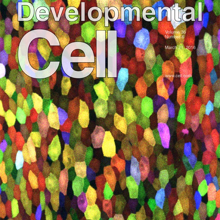Filter
Associated Lab
Associated Project Team
Publication Date
Type of Publication
4 Publications
Showing 1-4 of 4 resultsSmall molecule fluorophores are important tools for advanced imaging experiments. The development of self-labeling protein tags such as the HaloTag and SNAP-tag has expanded the utility of chemical dyes in live-cell microscopy. We recently described a general method for improving the brightness and photostability of small, cell-permeable fluorophores, resulting in the novel azetidine-containing "Janelia Fluor" (JF) dyes. Here, we refine and extend the utility of the JF dyes by synthesizing photoactivatable derivatives that are compatible with live cell labeling strategies. These compounds retain the superior brightness of the JF dyes once activated, but their facile photoactivation also enables improved single-particle tracking and localization microscopy experiments.
The presumptive altered dynamics of transient molecular interactions in vivo contributing to neurodegenerative diseases have remained elusive. Here, using single-molecule localization microscopy, we show that disease-inducing Huntingtin (mHtt) protein fragments display three distinct dynamic states in living cells - 1) fast diffusion, 2) dynamic clustering and 3) stable aggregation. Large, stable aggregates of mHtt exclude chromatin and form 'sticky' decoy traps that impede target search processes of key regulators involved in neurological disorders. Functional domain mapping based on super-resolution imaging reveals an unexpected role of aromatic amino acids in promoting protein-mHtt aggregate interactions. Genome-wide expression analysis and numerical simulation experiments suggest mHtt aggregates reduce transcription factor target site sampling frequency and impair critical gene expression programs in striatal neurons. Together, our results provide insights into how mHtt dynamically forms aggregates and disrupts the finely-balanced gene control mechanisms in neuronal cells.
Animal development is a complex and dynamic process orchestrated by exquisitely timed cell lineage commitment, divisions, migration, and morphological changes at the single-cell level. In the past decade, extensive genetic, stem cell, and genomic studies provided crucial insights into molecular underpinnings and the functional importance of genetic pathways governing various cellular differentiation processes. However, it is still largely unknown how the precise coordination of these pathways is achieved at the whole-organism level and how the highly regulated spatiotemporal choreography of development is established in turn. Here, we discuss the latest technological advances in imaging and single-cell genomics that hold great promise for advancing our understanding of this intricate process. We propose an integrated approach that combines such methods to quantitatively decipher in vivo cellular dynamic behaviors and their underlying molecular mechanisms at the systems level with single-cell, single-molecule resolution.
Transcription, the first step of gene expression, is exquisitely regulated in higher eukaryotes to ensure correct development and homeostasis. Traditional biochemical, genetic, and genomic approaches have proved successful at identifying factors, regulatory sequences, and potential pathways that modulate transcription. However, they typically only provide snapshots or population averages of the highly dynamic, stochastic biochemical processes involved in transcriptional regulation. Single-molecule live-cell imaging has, therefore, emerged as a complementary approach capable of circumventing these limitations. By observing sequences of molecular events in real time as they occur in their native context, imaging has the power to derive cause-and-effect relationships and quantitative kinetics to build predictive models of transcription. Ongoing progress in fluorescence imaging technology has brought new microscopes and labeling technologies that now make it possible to visualize and quantify the transcription process with single-molecule resolution in living cells and animals. Here we provide an overview of the evolution and current state of transcription imaging technologies. We discuss some of the important concepts they uncovered and present possible future developments that might solve long-standing questions in transcriptional regulation.

